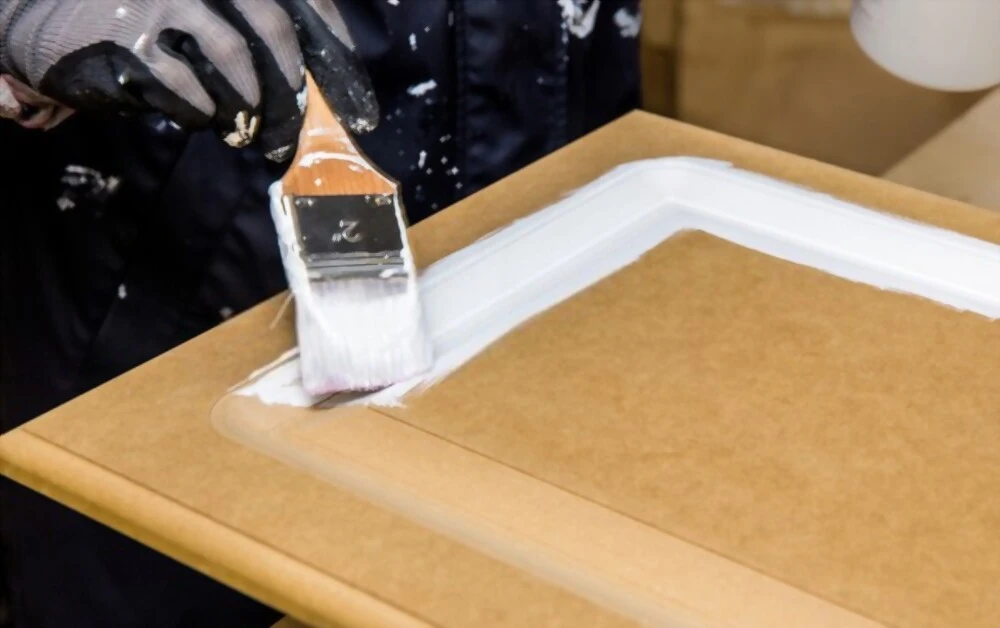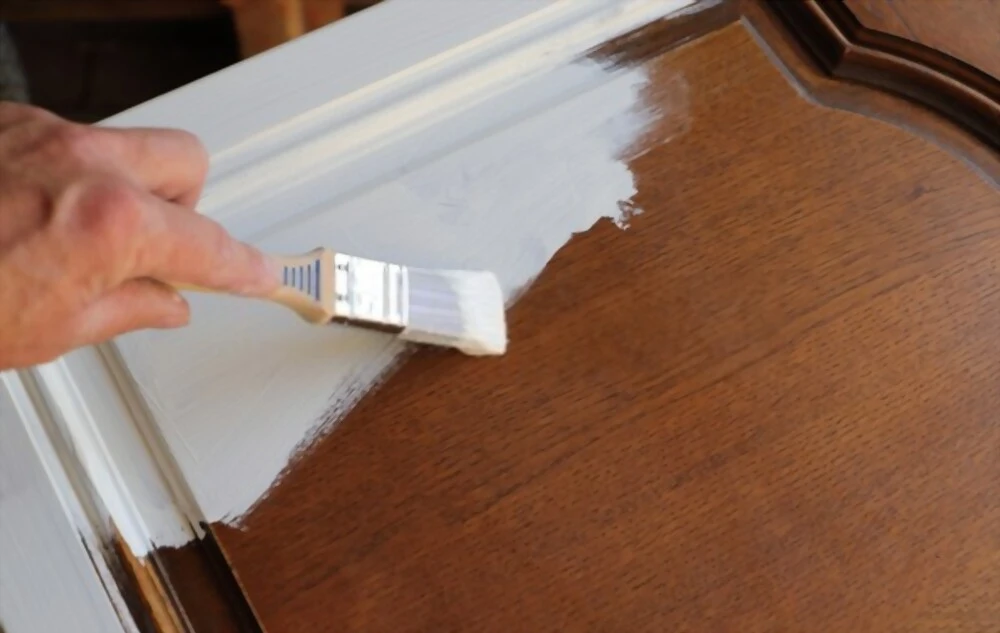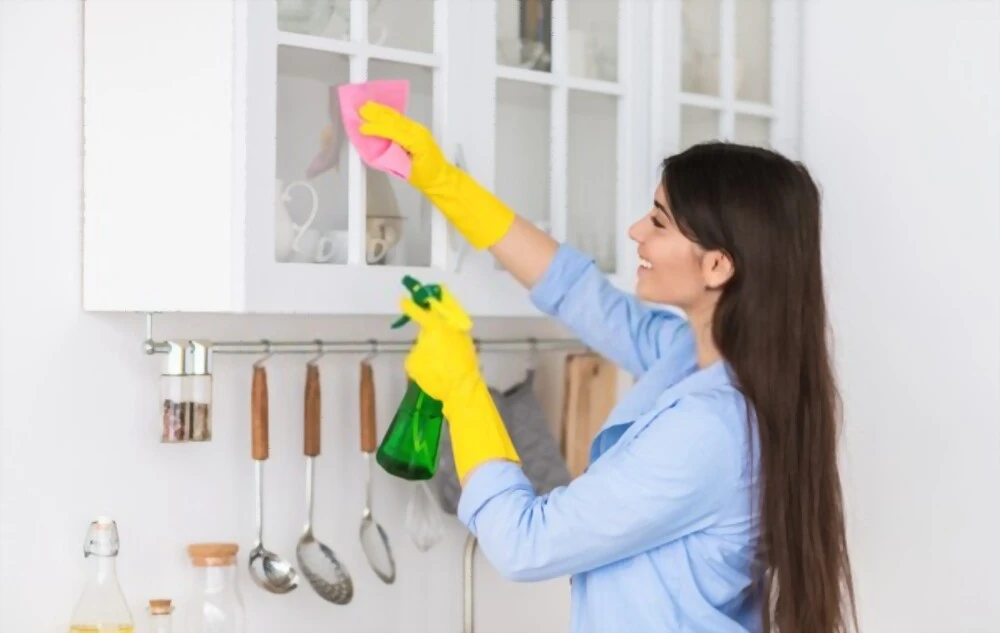
Priming cabinets before painting is essential for ensuring paint adhesion, protecting the wood, and achieving a professional, long-lasting finish.
Are you planning to give your kitchen a fresh, new look by painting your cabinets?
Hold on for a moment! Did you know that priming your cabinets is a game-changer in achieving a flawless and durable result?
In this article, we’ll dive into the importance of primer, when to prime your cabinets, the best primers for different cabinet materials, and some handy application tips. By the end, you’ll be armed with the knowledge to tackle your cabinet painting project like a pro!
So, let’s dive in and uncover the magic of priming your kitchen cabinets.
Why Primer is Essential for Kitchen Cabinets
Priming kitchen cabinets is an indispensable step in any home painting project. Applying primer to your cabinets ensures a high-quality finish and offers several advantages.
Importance of Applying Primer for Home Painting Projects
Painting over old or worn surfaces without priming them first often results in a poor-quality finish. The paint may not adhere well, and the final appearance may be unsightly. Using a primer ensures a better outcome for your painting project.
Cabinet Primer Benefits
Applying primer to your kitchen cabinets provides several essential benefits:
- Provides an ideal surface for topcoat paint: Primer creates a smooth, uniform surface that allows the topcoat paint to adhere properly, preventing issues such as flaking or peeling.
- Prevents mildew development: Primer helps protect the underlying woodwork from moisture, preventing mildew growth.
- Can be tinted to match most colors: Cabinet primer can be tinted to match your desired color, simplifying the painting process and reducing the need for custom tints.
By using primer for kitchen cabinets is essential for achieving a professional, high-quality finish. The benefits of primer make it a crucial component of any successful cabinet painting project.
When to Prime Your Cabinets
Knowing when to prime your cabinets is crucial for achieving a professional, high-quality finish. Here are some guidelines to help you determine when priming is necessary.
Painting New or Unfinished Cabinets
- Priming protects wood and improves paint adherence: Applying primer to new or unfinished cabinets ensures that the paint adheres properly and prevents peeling.
- Skipping primer on new wood leads to peeling paint: If you don’t use primer on new wood, the paint won’t stick well and may peel away over time.
- Primer seals wood and prevents moisture absorption: Applying primer helps seal the wood, protecting it from moisture damage.
Updating Painted Cabinets
- No need to prime if cabinets are in good shape: If your cabinets are already painted and in good condition, you don’t need to prime them before updating the color.
- Prime if cabinets have worn or scratched finish: If your cabinets have a worn or scratched finish or tannin stains, you should prime them before painting.
Priming Laminate Cabinets
- Don’t skip priming for laminate cabinets: It’s essential to apply primer to laminate cabinets before painting.
- Recommended primer: Stix Primer is a popular choice for priming laminate cabinets.
Removing Existing Finish
- Cabinets with clear sealer or varnish may require chemical stripper: If your cabinets have a clear sealer or varnish finish, you may need to remove it with a chemical stripper before priming.
- Stripping finishes can be messy and dangerous: Chemical stripping can be hazardous if not done carefully; consider hiring an expert for this step.
Choosing the Right Primer for Kitchen Cabinets
- Oil-based primers: These primers are best for bare wood and difficult wood cabinets, offering excellent adhesion and durability.
- Alkyd hybrid primers: Suitable for most surfaces, these primers have low VOCs and provide a strong bond for the topcoat paint
Determining the number of primer coats needed is important for achieving a professional finish on your kitchen cabinets.
Applying Primer to Cabinets
Ensuring a professional finish on your kitchen cabinets requires careful application of primer. Follow these guidelines for the best results.
Number of Primer Coats
Determining the number of primer coats needed is important for achieving a professional finish on your kitchen cabinets.
Unfinished Wood Cabinets
- At least two coats of primer: Unfinished wood is highly absorbent and typically requires a thick coating of primer before it’s ready for paint or stain.
- Follow manufacturer’s recommendations: Some manufacturers recommend only one coat, but if the finish of your cabinets is worn or imperfect, you’ll likely need two coats anyway.
Finished Cabinets
- Potential for damage: Finished cabinets can still splinter and get damaged over time, requiring repainting to maintain their appearance.
- Easier to use two coats of primer: Applying two coats of primer from the start makes it easier to maintain the finish and avoid repainting as often.
Checking Manufacturer’s Recommendations
- Consult product labels or websites: Most companies specify the recommended number of primer coats on their packaging or websites.
- Visit your local hardware store: If the manufacturer doesn’t provide clear recommendations, you can check out primer cans at your local hardware store or home improvement center for guidance
Tips for Applying Primer
- Use high-quality tools: Brushes, rollers, or paint sprayers should be of good quality to ensure a smooth, even application.
- Apply thin, even coats: This prevents drips and promotes a consistent finish.
- Sand between coats: Lightly sanding the surface between primer coats creates a smooth surface for paint to adhere to.
- Follow manufacturer’s recommendations for drying time: Adhering to drying time guidelines ensures a proper bond between primer and paint, leading to a more durable finish.
Conclusion
Priming your kitchen cabinets before painting is a crucial step in achieving a professional, long-lasting finish. By following the tips and recommendations outlined in this article, you can ensure a smooth, durable, and attractive result for your cabinet painting project.
Key Takeaways
- Primer is essential for creating an ideal surface for topcoat paint to adhere to and preventing common issues such as flaking, peeling, and mildew development.
- Prime new or unfinished cabinets to protect the wood and improve paint adherence.
- Consider priming when updating painted cabinets if they have a worn or scratched finish, or if tannin stains are present.
- Use primer on laminate cabinets for better paint adherence; Stix Primer is a recommended option.
- Choose the right primer for your cabinets, such as oil-based primers for bare wood and alkyd hybrid primers for other surfaces.
- Apply primer carefully, using high-quality tools, applying thin, even coats, sanding between coats, and following the manufacturer’s drying time recommendations.
By giving proper attention to the priming process, you’ll set the stage for a successful and beautiful kitchen cabinet painting project.


